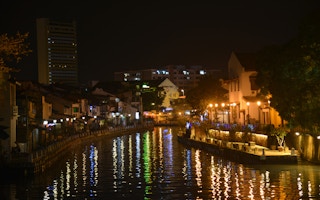Researchers at a Malaysian university have built an LED street lamp with a mosquito trap, both powered by wind and solar energy.
The lamp can offer communities across the developing world clean power to light their streets and protection from mosquito-borne diseases such as dengue fever, they say.
Chong Wen Tong, a mechanical engineer at the University of Malaya in Kuala Lumpur and the project’s principal investigator, says the integrated Eco-Greenergy lamp can fight mosquitoes, while reducing greenhouse gases.
According to Chong, the lamp’s wind turbine is suitable even at the “low and unsteady” wind speeds sometimes found in the tropics.
The mosquito trap relies on the mosquitoes’ natural attraction to carbon dioxide, which is breathed out by their human prey. The trap produces this gas to lure in the insects and then a fan prevents them from escaping.
This feature is designed to reduce the prevalence of dengue fever, which is transmitted by mosquitoes and whose prevalence is growing in Malaysia.
Dengue is widespread in the tropics. Although the disease rarely kills, it may cause as many as 390 million infections a year, and about ten times as many people across 128 countries may be at risk of infection.
The lamp can be sold for use in “suitable locations all around the world” that have the infrastructure in place to set up and maintain the lamps, Chong says. But although LEDs last much longer than conventional street lighting, each lamp costs around US$2,850 to buy and install, making it quite expensive.
The lamp cost US$30,000 to develop and pilot over 18 months, Chong tells SciDev.Net.
Two of the lamps have been installed through a pilot project at the University of Malaya campus, with three others at the university’s Field Studies Centre in the state of Selangor, Chong says. However, results from this pilot have not yet been released.
“This device is tailor-made for developing countries, where power outage and dengue fever are common problems for rural residents,” says Bernard Saw Lip Huat, a mechanical and materials engineer at the University of Tunku Abdul Rahman in Selangor, Malaysia.
Saw praises the lamp’s green energy system and easy installation, saying these factors help improve its appearance and functionality.
“I firmly believe that these benefits have the potential to make this invention extremely desirable to the engineering world today,” he says.








